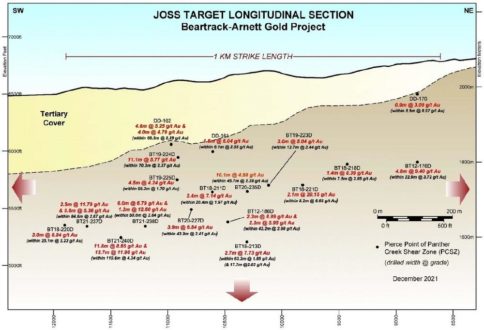
Uranium from the sea
Processes that are not (yet) used industrially include uranium extraction from phosphate rock, lignite, black shale or seawater. In Australia, a material has now been produced using neodymium that can effectively extract uranium from water. According to estimates, there are 4.5 billion tons of uranium in the oceans. The problem with extracting uranium from the oceans is that the uranium is highly diluted. However, various countries such as China, Japan and the USA have been researching the problem for years, as seawater contains many other substances such as iron. The method now discovered by the Australians appears to be simple and effective. It works with layers that contain positive and negative charges. By adding neodymium, the uranium can be better bound. For cost reasons, uranium from seawater is more of an economically accessible long-term reserve. And there are even rivers where the uranium concentration is higher than in the oceans.
For the time being, however, it is still the classic uranium deposits from which the uranium for the nuclear power plants is extracted. The largest uranium deposit is said to be in the Olympic Dam deposit in South Australia. There are particularly rich uranium deposits in the Athabasca Basin in Saskatchewan. Incidentally, the first uranium deposit was discovered in Germany. From 1946 to 1990, uranium was mined in Thuringia and Saxony. Coal also usually contains traces of uranium, or rather the ash. In the USA, uranium was extracted from coal ash between 1960 and 1970. Today, however, it is renowned mining companies such as Uranium Energy or IsoEnergy that are responsible for uranium extraction.
Uranium Energy – https://www.commodity-tv.com/ondemand/companies/profil/uranium-energy-corp/ – is looking forward to record sales in 2023, is debt-free and has uranium projects in Canada and the USA.
IsoEnergy – https://www.commodity-tv.com/ondemand/companies/profil/isoenergy-ltd/ – owns very high-grade uranium projects in the Athabasca Basin in Saskatchewan, including the important Hurricane deposit.
Current company information and press releases from Uranium Energy (- https://www.resource-capital.ch/en/companies/uranium-energy-corp/ -) and IsoEnergy (- https://www.resource-capital.ch/en/companies/iso-energy-ltd/ -).
In accordance with §34 WpHG I would like to point out that partners, authors and employees may hold shares in the respective companies addressed and thus a possible conflict of interest exists. No guarantee for the translation into English. Only the German version of this news is valid.
Disclaimer: The information provided does not represent any form of recommendation or advice. Express reference is made to the risks in securities trading. No liability can be accepted for any damage arising from the use of this blog. I would like to point out that shares and especially warrant investments are always associated with risk. The total loss of the invested capital cannot be excluded. All information and sources are carefully researched. However, no guarantee is given for the correctness of all contents. Despite the greatest care, I expressly reserve the right to make errors, especially with regard to figures and prices. The information contained herein is taken from sources believed to be reliable, but in no way claims to be accurate or complete. Due to court decisions, the contents of linked external sites are also co-responsible (e.g. Landgericht Hamburg, in the decision of 12.05.1998 – 312 O 85/98), as long as there is no explicit dissociation from them. Despite careful control of the content, I do not assume liability for the content of linked external pages. The respective operators are exclusively responsible for their content. The disclaimer of Swiss Resource Capital AG also applies: https://www.resource-capital.ch/en/disclaimer/
Swiss Resource Capital AG
Poststrasse 1
CH9100 Herisau
Telefon: +41 (71) 354-8501
Telefax: +41 (71) 560-4271
http://www.resource-capital.ch
Telefon: +49 (2983) 974041
E-Mail: info@js-research.de
![]()



